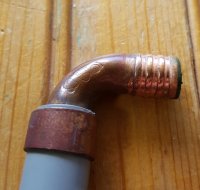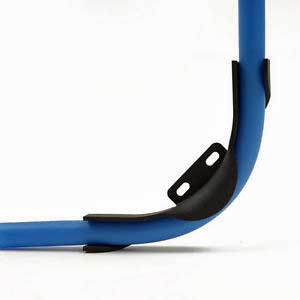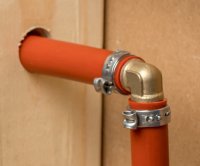Brian80
New Member
I recently had to take apart some polybutylene piping in my house (ironically, it was actually the soldered joint next it which failed). I noticed their elbow fittings had a gradual sweep like this:

As far as I know, in the PEX world there are 2 options to redirect a pipe in a tight space. It's either a support bracket for large radius corners, or a 90 degree fitting for sharp corners.


PEX and poly-b are very similar in terms of physical characteristics and fittings, so I wonder why we don't see a "sweep 90" fitting for PEX like they had for poly-b. Wouldn't they be better in terms of reducing pressure drops while still working in fairly tight corners?
Just wondering...

As far as I know, in the PEX world there are 2 options to redirect a pipe in a tight space. It's either a support bracket for large radius corners, or a 90 degree fitting for sharp corners.


PEX and poly-b are very similar in terms of physical characteristics and fittings, so I wonder why we don't see a "sweep 90" fitting for PEX like they had for poly-b. Wouldn't they be better in terms of reducing pressure drops while still working in fairly tight corners?
Just wondering...
Last edited by a moderator:

